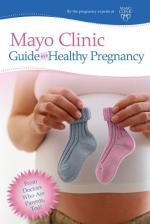|
This section contains 1,711 words (approx. 6 pages at 300 words per page) |

|
During pregnancy, the metabolic demands brought on by the fetus, placenta, and uterus, along with the increase of pregnancy hormones and, latter, the mechanical pressure of an expanding uterus, create alterations in a woman's body from both a physiological and anatomical point of view. These changes are extensive and may be systemic or localized. They are necessary to maintain a healthy fetus without compromising the mother's health.
After intercourse (coitus), millions of motile sperm make their way upward through the uterus and fallopian tubes.They are able to live in female genital tract for 72 hours but are usually highly fertile only for 24 hours. Accordingly, for fertilization (the fusion of the nuclear components in the head of a sperm with the nucleus of an ovum) to occur, it is usually necessary that an ovum be expelled from the ovary...
|
This section contains 1,711 words (approx. 6 pages at 300 words per page) |

|


